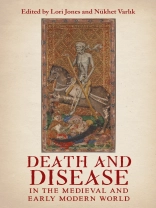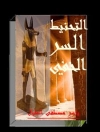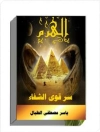This collection highlights and nuances some of the recent critical advances in scholarship on death and disease, across and beyond the pre-modern Mediterranean world, Christian, Islamic and Jewish healing traditions.
Across and beyond the pre-modern Mediterranean world, Christian, Islamic and Jewish healing traditions shared inherited medical paradigms containing similar healthy living precepts and attitudes toward body, illness and mortality. Yet, as the chapters collected here demonstrate, customs of diagnosing, explaining and coping with disease and death often diverged with respect to knowledge and practice.
Offering a variety of disciplinary approaches to a broad selection of material emerging from England to the Persian Gulf, the volume reaches across conventional disciplinary and historiographical boundaries. Plague diagnoses in pre-Black Death Arabic medical texts, rare, illustrated phlebotomy instructions for plague patients, and a Jewish plague tract utilising the Torah as medicine reflect critical re-examinations of primary sources long thought to have nothing new to offer. Novel re-interpretations of Giovanni Villani’s ‚New Chronicle‘, canonisation inquests and saints‘
lives offer fresh considerations of medieval constructions of epidemics, disabilities, and the interplay between secular and spiritual healing. Cross-disciplinary perspectives recast late medieval post-mortem diagnoses in Milan as a juridical – rather than strictly medical – practice, highlight the aural performativity of the Franciscan deathbed liturgy, explore the long evolution of lapidary treatments for paediatric and obstetric diseases and thrust us into the Ottoman polychromatic sensory world of disease and death. Finally, considerations of the contributions of modern science alongside historical primary sources generates important new ways to understand death and disease in the past. Overall, the contributions juxtapose and interlace similarities and differences in their local and historical contexts, while highlighting and nuancing some of the recent critical advances in scholarship on death and disease – two historiographical subfields long approached separately.
Inhaltsverzeichnis
Intersections: Disease and Death, Medicine and Religion, Medieval and Early Modern
LORI JONES, NÜKHET VARLIK AND WINSTON BLACK
PART I: DIAGNOSING, EXPLAINING AND RECORDING
1 Knowing the Signs of Disease: Plague in the Arabic Medical Commentaries between the First and Second Pandemics
NAHYAN FANCY
2 The Legal Foundations of Post-Mortem Diagnosis in Later Medieval Milan
ANN G. CARMICHAEL
3 Epidemic Illness in the Last Book of Giovanni Villani’s
New Chronicle, 1345-1348: Warfare, Sin and the Heavens
NICOLE ARCHAMBEAU
4 Colours of Disease and Death in the Early Modern Ottoman Cultural Imagination
NÜKHET VARLIK
PART II: COPING, PREVENTING AND HEALING
5 The Role of Music in a Franciscan Liturgy for the End of Life, as Evidenced in Manuscript Newberry 24
ELAINE STRATTON HILD
6 Medical and Spiritual Healing of Death and Disease in Medieval Miracle Stories
JENNIFER C. EDWARDS
7 Infirmity and Death-Wishes in Medieval French and Italian Canonisation Processes
JENNI KUULIALA
8 Bubo Men? Repurposing Medieval Anatomic Illustrations for Plague Therapy in the Fifteenth and Sixteenth Centuries
LORI JONES
9 Psalm 38 as Plague Diagnostic and Prophylactic in Abraham Yagel’s
Moshi’ah Ḥosim (1587)
ANDREW BERNS
10 The Protection of Innocents: Red Coral as a Lapidary Cure for the ‚Children’s Disease‘ and Conditions Related to Childbirth in Medieval and Early Modern England
NICHOLA E. HARRIS
PART III: STUDYING, ANALYSING AND INTERPRETING
11 Leprosy in Medieval Europe: An Immunological and Syndemic Approach
FABIAN CRESPO
12 Past Plagues: On the Synergies of Genetic and Historical Interpretations of Infectious Disease
HENDRIK POINAR
SELECT BIBLIOGRAPHY
INDEX
Über den Autor
Nükhet Varlık is Associate Professor of History at Rutgers University-Newark. Her research focuses on disease, death, medicine and public health in the Ottoman Empire.












